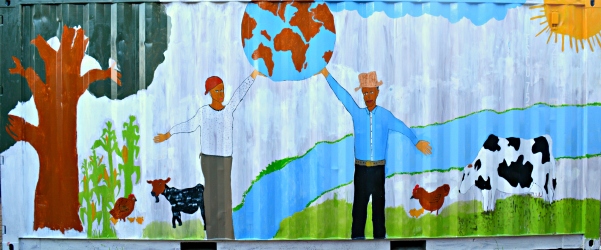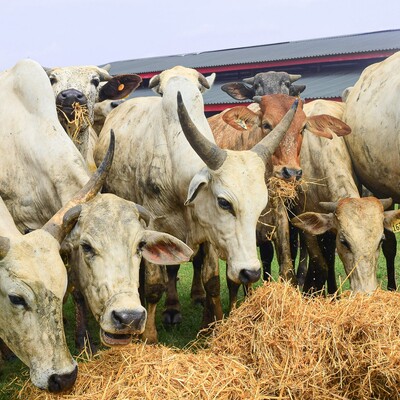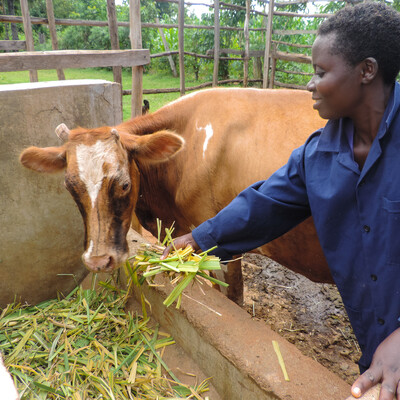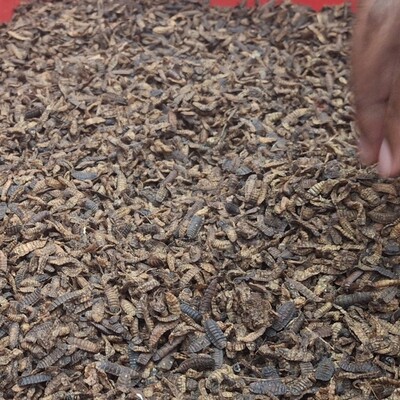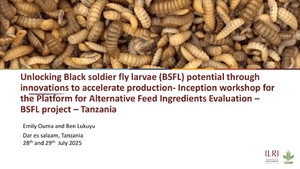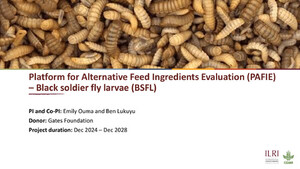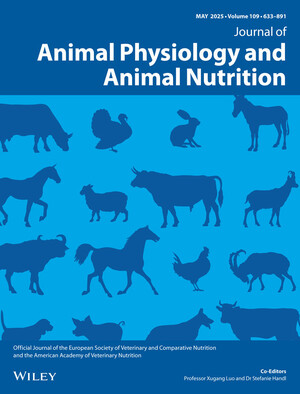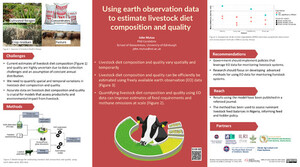
From New Zealand to the US, Kenya to Colombia, scientists are on a mission to make livestock less gassy
A schoolchildren’s painting of a container outside the Mazingira Centre, an environmental initiative of the International Livestock Research Institute (ILRI), in Nairobi, Kenya (photo credit: ILRI/Susan MacMillan).
Ruminants such as cattle, buffalo, sheep and goats produce nitrous oxide, carbon dioxide and methane, which is the most emitted gas and is released through belching.
Scientists are working on ways to reduce those emissions, including by breeding animals that burp less, adjusting their diets so they produce less methane and planting trees in pastures.
“We domesticated ruminants over 10,000 years ago and relatively little has changed. It’s time that got an upgrade,” said Elizabeth Latham, co-founder of Texas-based Bezoar Laboratories. Her company is working on a type of probiotic—helpful bacteria or yeasts in the digestive system—which has shown a 50 percent reduction of methane emissions in cattle during research. . . .
Thousands of miles away, New Zealand’s AgResearch has bred sheep to produce 10 percent less methane. . . . “The beauty of breeding the animal to be low methane… is it’s permanent,” Rowe told the Thomson Reuters Foundation, adding the team is conducting similar research on cattle and deer. . . .
Attempts to reduce methane emissions from livestock are not limited to the world’s most affluent nations. In India, a national programme to boost the milk production of cows and buffalos by improving their diet is also helping the environment, according to Rajesh Sharma, senior manager at the National Dairy Development Board (NDDB). . . . The tailored diet means each animal produces 12 to 15 percent less methane, according to Sharma. Over the past five years, the programme has reached about 2.6 million of the nearly 300 million cows and buffalos recorded in India’s 2014 livestock census, he said.
In Kenya, scientists are testing various local grasses to see if they improve the productivity of livestock, which would reduce the amount of emissions per kg of [milk and meat].
Cows are placed in respiration chambers where scientists measure the methane emissions from different feeds available in East Africa, said Lutz Merbold, senior scientist at the Mazingira Centre, a Nairobi-based research institution. . . .
Improvements in productivity alone could reduce up to 30 percent of methane emissions from livestock globally, said Anne Mottet, FAO’s livestock policy officer. Her department has developed a web application that allows farmers and researchers to calculate how changes in animal feed may affect emissions.
Latin American ranchers are experimenting with silvopastoralism—planting trees in pastures where they absorb greenhouse gases and offset emissions, while restoring degraded soil and improving biodiversity. . . .
As consumers have become more environmentally conscious, ruminants have been vilified for their emissions, as well as the amount of land and water they require. . . . Yet, campaigns to abandon meat sometimes ignore the reality of small-scale farmers in Asia, Africa and South America who depend on animals for their health and livelihoods, according to experts.
Merbold, of the Mazingira Centre, said consumers in richer countries have the privilege of turning away from meat-heavy diets. “But if you’re living in certain regions in Africa, livestock provides you with essential nutrition you can’t get somewhere else,” he said. . . .
What is needed is balance, [FAO’s Anne Mottet] said.
“We have countries that consume about 100 kg of meat (per person each year). In others, it’s about four.”
Read the whole article by Thin Lei Win at Thomson Reuters Foundation: Fighting global warming, one cow belch at a time, 19 Jul 2018.
Read more about ILRI’s Mazingira Centre.






